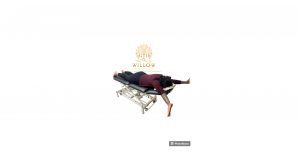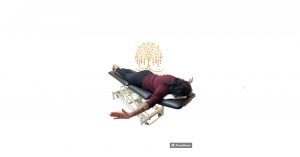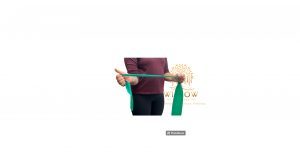
Compression Stockings: Benefits and Who Can Benefit from Them
19th March 2025
Resistance bands are versatile in terms of their strength and allow for progressive resistance training, essential for rebuilding strength and improving shoulder stability after injury or surgery.
They are fun colors- red, yellow, orange though the level of resistance depends upon the brand that is being used. This adaptability also makes them suitable for both beginners and advanced users, allowing for a tailored approach to shoulder rehabilitation. These elastic bands can be used for various exercises that specifically target the shoulder muscles, including the rotator cuff, which is crucial for shoulder stability and function.
Resistance bands are lightweight, portable, and easy to use, making them an excellent option for home-based rehabilitation. Patients can perform their exercises in the comfort
of their own homes.

Y exercise
Lay prone means face down on a bed with a small rolled towel under your forehead to make room for breathing. Keeping the shoulder blade ‘set’ and elbows straight. Raise the arms away from the body keeping them horizontal to the floor. The elbows should be straight, generating the force from the scapular stabilizers- middle and lower parts of the trapezius, a Y shape activates both the middle and lower parts of a trapezius muscle group5. Don’t forget to keep the thumbs pointing up towards the ceiling. Perform 10 repetitions in 3 sets.
The resisted version of this exercise can be performed by tying a resistance band on the door knob, closing the door firmly making sure the band is properly hooked. Grab the end of the band and move your arms up towards the ceiling in a Y position while standing. Perform 10-20 repetitions in the 1-2 weeks as more endurance is being built-up and then increase the repetitions followed by resistance as tolerated.
2: Prone horizontal abduction (‘T’s)–

T Scapular exercise
Yes it is another favorite one-simple and effective. Laying in the same position-prone with your arms hanging freely off the side of the bed.
Remember thumb pointing to the ceiling, set shoulder blades and raise your arms away from the body to shoulder height. Hold that position for 1 to 2 seconds and slowly lower. Limit the height that you raise the arm horizontal to the floor. Perform 2-3 sets of 10 repetitions.
Again the resistant version can be performed by either using a resistance band tied to the bed end or using 1 lbs dumbbells.
3: Shoulder rows- Prone rowing exercise
Yes, stay in the same position-prone, arms hanging freely off the side of the bed and set your shoulder blades again, raise the arms while bent at the elbow towards the ceiling. The elbow should stay close to the body until hands touch the lower ribs. Return slowly to the start position. Perform 2 sets of 15 repetitions.
For the resistant version of this exercise, use a resistance band tied to the end of the bed or 1lbs dumbbells. Perform 2-3 sets of 10 repetitions.
Find a spot to tightly secure the theraband and grab a stool to sit a few steps away so that Your arms are straight and raised to about chest height, and the bands should have some tension. Start by pulling the band to the side of your ribcage while your elbows bend. Don’t forget to squeeze your shoulder blades together as you hold. Then relax your arms back to the starting position. Repeat 10 reps in 3 sets.
4: Shoulder External Rotation-
Find a secure spot to tie the theraband at the waist level and grab the one end of the band, pull the band all the way 
5: Shoulder Internal rotation–
Keeping the band in the same position as above pull the cord all the way through until it is taut. Keep the elbow close to the chest and move the arm to the point the pain allows. Perform 3 sets of 10 repetitions.
Lets get going now!! Do the Home exercise plan, if you still have questions come and see me. We can chat, learn and assess the shoulder pain further and provide you with valuable educational resources and help resolve the pain with the effective Physiotherapy techniques. Call 604-533-1819 or book today online
Written by Mandeep (Meenie) Hundal, M.Sc. PT, B.P.T.
Meenie has been working as a musculoskeletal Physiotherapist with more than 10 years of experience treating musculoskeletal injuries, she has been practicing since 2016 in Canada. Meenie has a Masters in Science Physiotherapy which she completed with merit and was awarded the vice chancellor scholarship award. She is certified in both IMS, Vestibular and Concussion rehabilitation.
Medical Disclaimer:
The information presented in this blog post is for educational purposes and should not be interpreted as medical advice. If you are seeking medical advice, treatment or a diagnosis, consult with a medical professional such as one suggested on this website. Willow Wellness and the author of this page are not liable for the associated risks of using or acting upon the information contained in this article.